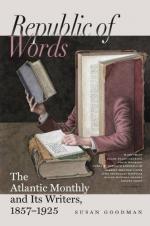The number of the wives of many of the principal Mormons has been greatly exaggerated. Attached to Young’s establishment in Salt Lake City, there are only sixteen. His first wife occupies the Mansion-House exclusively, while the others are quartered in the Lion-House. Besides these, he has probably fifty or sixty more, scattered all over the Territory, and in the principal cities of the United States and of Great Britain. His living children do not exceed thirty in number. Kimball’s wives, resident in Salt Lake City, are quite as numerous as Young’s, and his children even more so. Both of them aim to reproduce the domestic life of the Biblical patriarchs; and within the squares which they occupy their descendants dwell also, with their wives and progeny, all of them acknowledging the control of the head of the family. The harems of very few of the Church dignitaries approach these in magnitude. The extent of the practice of polygamy cannot be determined by a residence in Salt Lake City alone, for it is there that those Church officers congregate whose wealth enables them to maintain large families. As the traveller journeys northward or southward, he finds the instances diminish in almost exact proportion to his remoteness from the central ecclesiastical influence. There is even a sect of Mormons, called Gladdenites, after their founder, one Gladden Bishop, who deny the right of Young to supreme authority over the Church, and discountenance polygamy. No computation of their number can be made, for few of them dare avow their heresy, on account of the persecution which is the invariable result. The leaders of this sect maintain that a majority of the married men in Utah have but one wife each, and their assertion has never been controverted.




